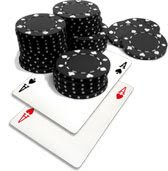If you have been following this series of tips, you will have picked up on the primary focus of this article. That is how to take advantage of your opponents "tells" when they are attempting to misrepresent themselves at the poker table. As I have mentioned in earlier articles, the "tells" become evident as a result of physical manifestations of the misrepresentations. Simply put, the brain struggles to cope with conflicting information that results in the body doing something that the person telling the lie has no control over.
In previous articles I have discussed how to watch hand gestures for valuable information. Also how the feet and lower body have the ability to unconsciously communicate a person's true feelings. The next part of the body to pay attention to is the mouth and how it is revealed to people when a person is being genuine with them as opposed to when they are being dishonest.
When a person is smiling and being open and honest with others, there is a muscle called the zygomatic muscle that comes into play and supports the smile. When a person is faking a smile, the zygomatic muscle is not used and the consequence is that the surrounding skin and muscle groups do not get the support from the zygomatic which results in a visible twitch around the corner of the mouth. This response is automatic and can not be helped. A visible facial twitch in a poker game can become invaluable at the appropriate times.
Study of facial recognition and responses have been conducted for years. A pseudo-science known as phrenology once examined the correlation between the shapes and sizes of a person's skull, to their capacity for certain types of character traits. Over the years the study of the skull lost support and a more focused examination of the face to precedent. It was discovered and believed by some that the facial muscles were actually responsible for various emotions experienced by individuals. When that belief, it was concluded that by manipulation of the face, various emotions could be imposed on test subjects. Therefor, it was concluded that emotions could be manually manufactured in an instant by simple manipulation of the face.
Whether or not the hypothesis is supported today, there are certain aspects of the study which continue to stand up to the test of time. Specifically, the mouth is a strong indicator of whether the test subject is experiencing happiness and satisfaction or sadness and dissatisfaction. For example, if the test subject was content, the lips would appear to fill up, the mouth would open slightly and the corners would turn upwards. Conversely, if the test subject was sad or displeased, the lips would deflate, the mouth would close up and the corners would flatten out or turn downwards. This information applied to the poker table is invaluable.
Imagine a flop comes down and while examining your opponent's face you see the corners of his mouth turn upwards and his lips part. It would be a safe assumption that the flop has hit him and he is satisfied with his current situation. Alternatively, if after a flop comes down you ask your opponent how well that hit him and he just looks at you and smiles with a small twitch, it is reasonable to assume that he isn't that pleased with the flop. It is important to realize that these responses are autonomic. Your opponents are unaware of them.
You will have to watch your opponents closely for these cues because often they will happen quickly. Keep in mind that this type of read will be a little different for each player for the simple reason that everybody is a little different. You will have to study your opponents closely and learn what the "tells" share with you about their state of mind. Learn to develop this reading skill and you will see your bankroll benefit in the long run.
Thursday, October 23, 2008
Subscribe to:
Post Comments (Atom)









No comments:
Post a Comment